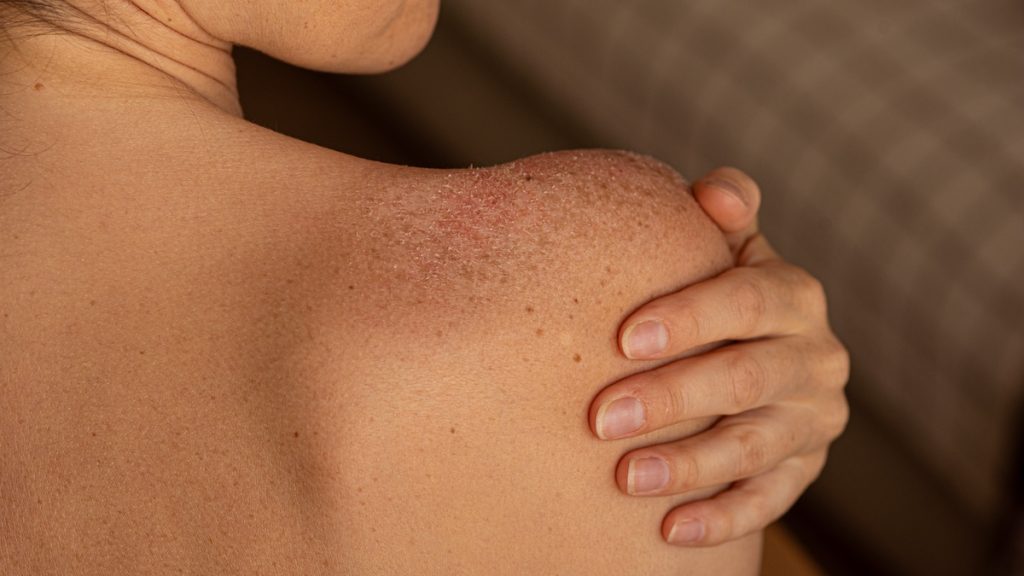Heat Rash 101: Here’s How to Keep It Cool

Warm weather can bring plenty of fun—but it also brings sweat, friction, and skin irritation. One common result? Heat rash. Also called prickly heat or miliaria, this condition happens when sweat gets trapped beneath the skin’s surface, leading to bumps, redness, and discomfort.
At Dermatology Associates of Plymouth Meeting, we often see heat rash during the hotter months and understand how frustrating it can be. The good news? With the right care and a few simple strategies, most cases can be managed easily at home. In this guide, we’ll walk you through what causes heat rash, how to recognize it, and what you can do to keep your skin calm and comfortable.
What Causes Heat Rash?
Heat rash happens when the sweat ducts become blocked. When sweat can’t escape through the surface of the skin, it builds up underneath, causing inflammation and irritation.
Common triggers include:
- Hot and humid weather
- Tight or non-breathable clothing
- Heavy physical activity or exercise
- Prolonged bed rest, especially in warm environments
- Immature sweat ducts (in infants)
Though often seen in children, adults can also experience heat rash—particularly in areas where skin folds or clothing creates friction.
Recognizing the Symptoms
Heat rash can look different depending on the type and severity, but the most common signs include:
- Small red or pink bumps on the skin
- Itching or prickling sensation
- Mild swelling or tenderness
- Clusters of bumps that may appear in folds of the skin or areas where sweat builds up (neck, chest, back, underarms, groin, etc.)
In some cases, small blisters may develop. If the rash becomes painful, spreads significantly, or develops signs of infection (such as increased redness, pus, or fever), it’s important to seek medical care.
Who Is at Risk?
Certain people are more prone to heat rash, especially during extended heat exposure:
- Infants and toddlers, due to underdeveloped sweat ducts
- Athletes and individuals who work outdoors
- Those who wear tight or synthetic fabrics during hot weather
- Bedridden or hospitalized individuals, especially those with limited mobility
While heat rash typically resolves on its own, ongoing cases may require professional care to relieve symptoms and prevent complications.
Managing Heat Rash at Home
In many situations, heat rash can be managed with simple adjustments and supportive care. Here are steps to relieve discomfort and reduce recurrence:
- Cool down the skin: Move to a shaded or air-conditioned space as soon as symptoms start.
- Keep the skin dry: Gently pat the skin dry; avoid rubbing or using harsh towels.
- Wear breathable fabrics: Lightweight, loose cotton clothing helps prevent sweat buildup.
- Avoid heavy creams or ointments: These can further block sweat glands.
- Use mild, fragrance-free cleansers: These help avoid further irritation.
In some cases, calamine lotion or non-prescription hydrocortisone cream may ease itching—but these should only be used short term and under guidance if applied to young children.
When to See a Dermatologist
While most cases resolve within a few days, persistent or worsening symptoms may require evaluation. You should schedule a dermatology appointment if:
- The rash doesn’t improve within a week
- You notice signs of infection (pus, fever, worsening redness)
- The rash is painful or interferes with daily activities
- You or your child experience frequent episodes
At Dermatology Associates of Plymouth Meeting, our team can assess the rash, rule out similar conditions, and offer treatment options tailored to your needs. We may recommend prescription-strength anti-inflammatory creams or suggest a plan to prevent future episodes in warm weather.
Keep Your Skin Cool and Clear
Heat rash doesn’t have to put a damper on your summer. Simple changes—like choosing lighter clothing or cooling down at the first sign of irritation—can go a long way in preventing discomfort.
If heat rash becomes persistent or interferes with daily life, our team at Dermatology Associates of Plymouth Meeting is ready to help. We offer personalized care plans to treat symptoms, reduce flare-ups, and support your skin throughout the summer months and beyond.
